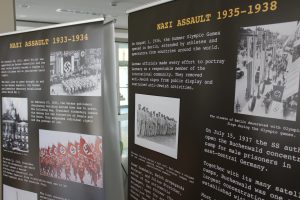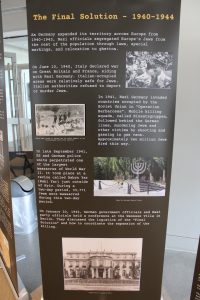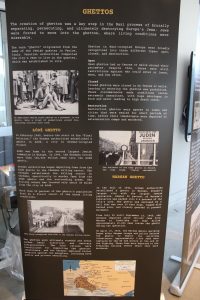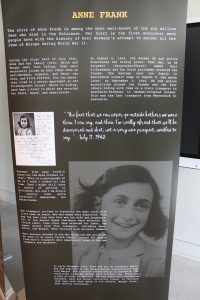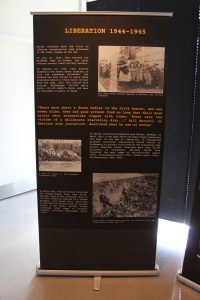
The Holocaust saw six million Jews murdered by Nazi-German authorities, in the lands they controlled, between 1933 and 1945. This sobering statistic has done much over the last eight decades to force nations to confront anti-Semitism within their borders.
But recent incidents show more work needs to be done, as there were 2,799 reported anti-Semitic incidents in Canada in 2022, according to B’nai Brith Canada.
Now, thanks to a powerful exhibit on display recently at the Beaverbrook Art Gallery, district educators are teaching students about the Holocaust and the origins of anti-Semitism.
“We want them to understand where modern-day anti-Semitism comes from,” said Holocaust exhibit director Jasmine Kranat. “They’re the next generation of leaders in our community that will make a difference.”
The exhibit started as a pilot project in the 2021-2022 school year with visits from 200 Fredericton High School students. This school year, 600 district students from five schools visited the exhibit—which was designed by Jasmine’s mother, Ayten Kranat—at both the Beaverbrook Art Gallery and the Fredericton Synagogue.
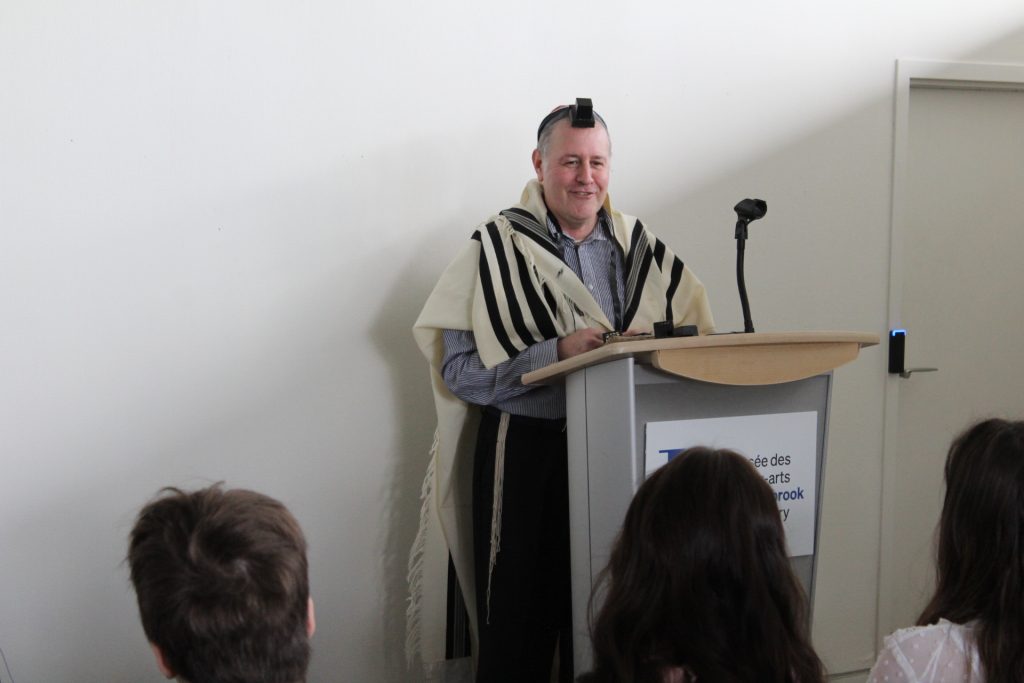
Displays chronicle the anti-Semitic origins of the Holocaust, the methods Nazi’s used to strip Jews of their rights in Nazi-controlled lands, and the victimization and murder of Jewish people in ghettos and concentration camps.
On a recent visit, students from Harvey High School watched recorded testimonials from Holocaust survivors and heard a lecture from Rabbi Yosef Goldman of Fredericton’s Sgoolai Israel Synagogue.
“Actually, I know a lot about what happened because my mother is German,” said Lucas Azpilicueta, a Harvey High School Grade 10 exchange student from Spain. “She always taught me about the Holocaust. She said it was very important for me to know what happened and why. She read me The Diary of Anne Frank when I was nine years old, and I still remember everything.”
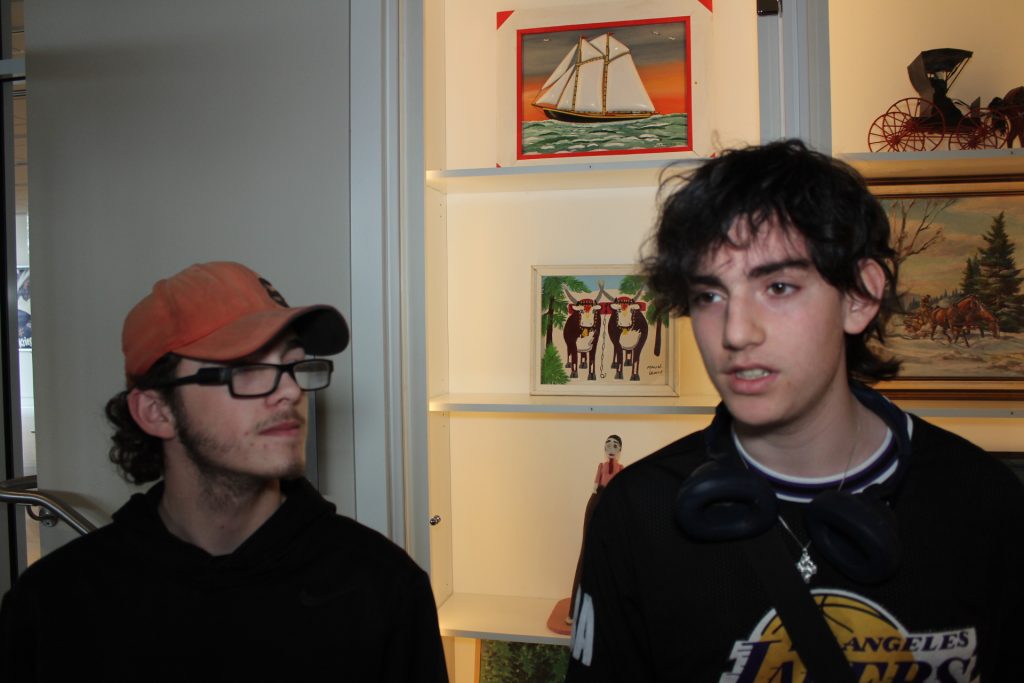
But Kranat hopes the exhibit reaches those with scant Holocaust knowledge because “I’ve met a lot of students and a lot of adults who don’t know what the Holocaust is, and I really hope it’s because of lack of awareness and not ignorance and hate.”
“I worry that when some people see things on social media, they’re not critical thinkers; they’re not questioning what they’re seeing,” she said. “A lot of the kids have told me that they see neo-Nazi propaganda on social media all the time. Social media is VERY dangerous.”
The exhibit also offers students exposure to the local Jewish community “because sometimes the students have never met a Jewish person or learned about the Jewish community,” said Social Studies Educational Support Teacher Eric Church, the district’s lead for the Holocaust exhibit visits.
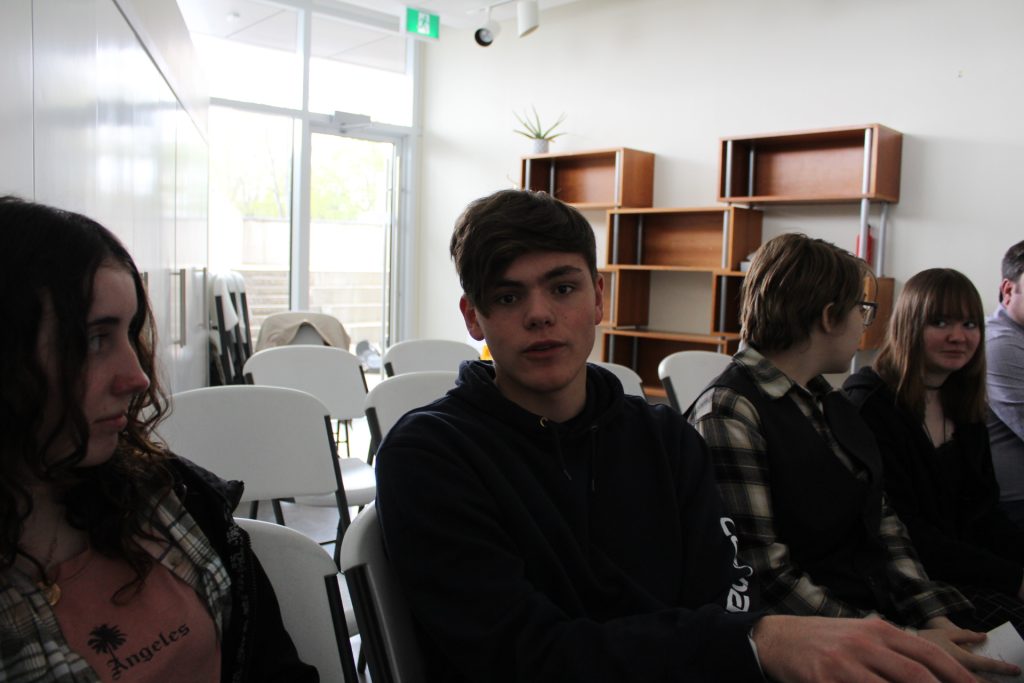
“The goal of this Holocaust exhibit visit is for students to learn, to wonder, to question what happened in the Holocaust, to learn what Anti-Semitism is,” said Church. “The loss of six million lives; even for me, it’s hard to wrap your head around the scope of the tragedy.”
“It’s important to see how [the Holocaust] is treated in other countries, like Canada,” said Tim Neidert, a Harvey High School Grade 10 exchange student from Germany. “People think ‘we did that [in the past], but we’re not doing that anymore,’ which isn’t true. Anti-Semitism is still a big problem. It still exists.”
Positive Impact
Though the exhibit’s subject matter is grim, both Kranat and Church believe it is having the desired effect on students.
“I give the kids reflection cards at the end, and some of the kids say, ‘I didn’t understand why anti-Semitism and Jewish jokes were so offensive. But today, I learned, and I’m never going to do that again’,” said Kranat.
Based on student feedback, Church said, “We’re hearing things like ‘I didn’t realize I was using anti-Semitic rhetoric in the past. I heard something anti-Semitic, and I didn’t do anything. Next time I’ll step up to the plate.’”
The Holocaust exhibit is currently on display at Fredericton’s Sgoolai Israel Synagogue.
